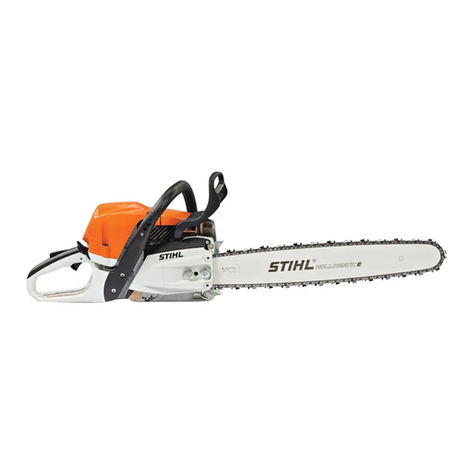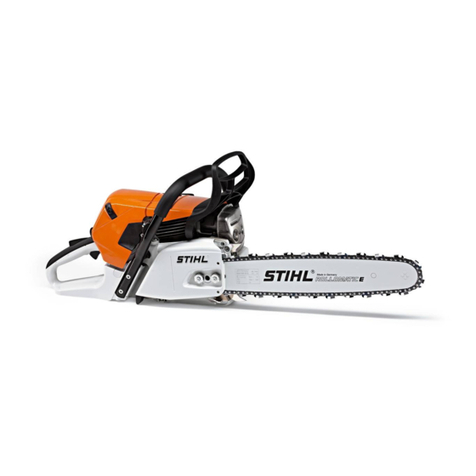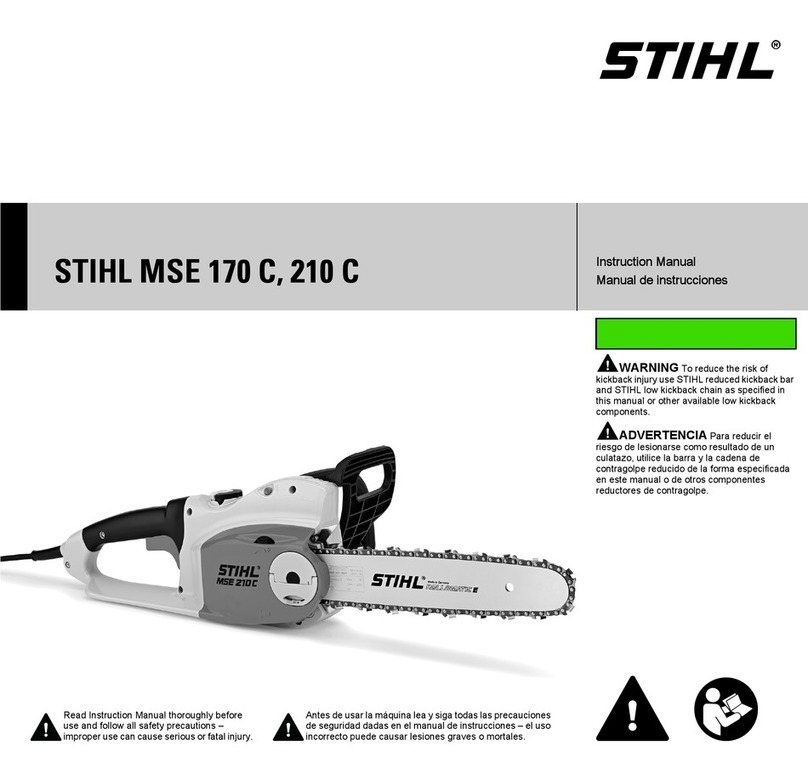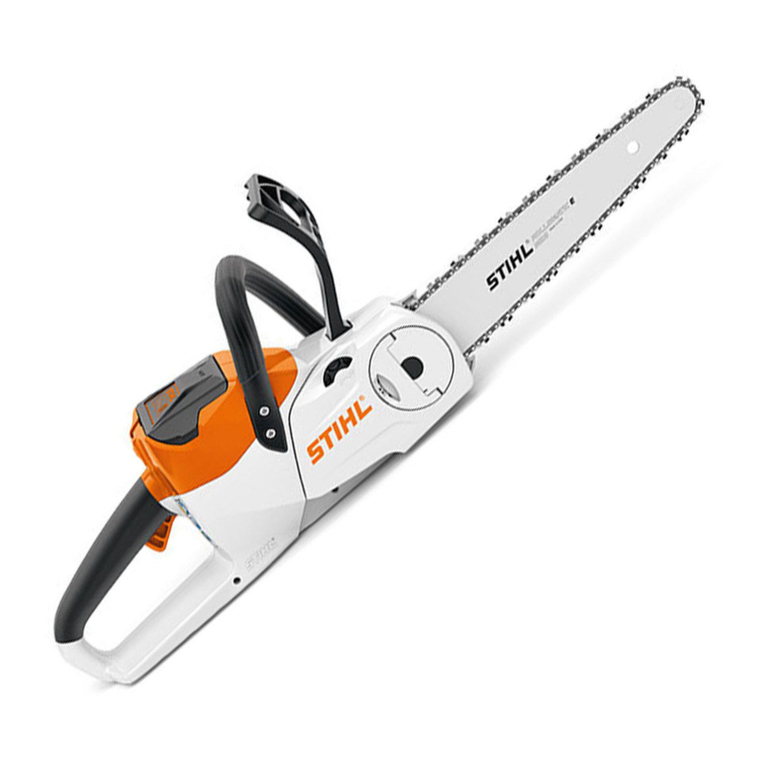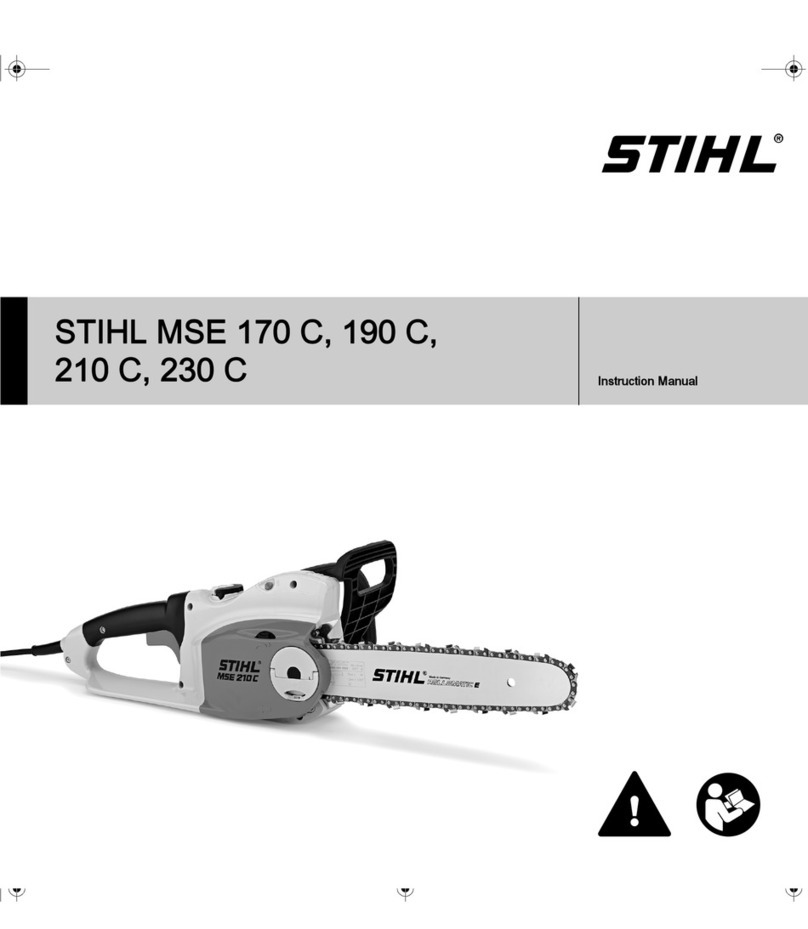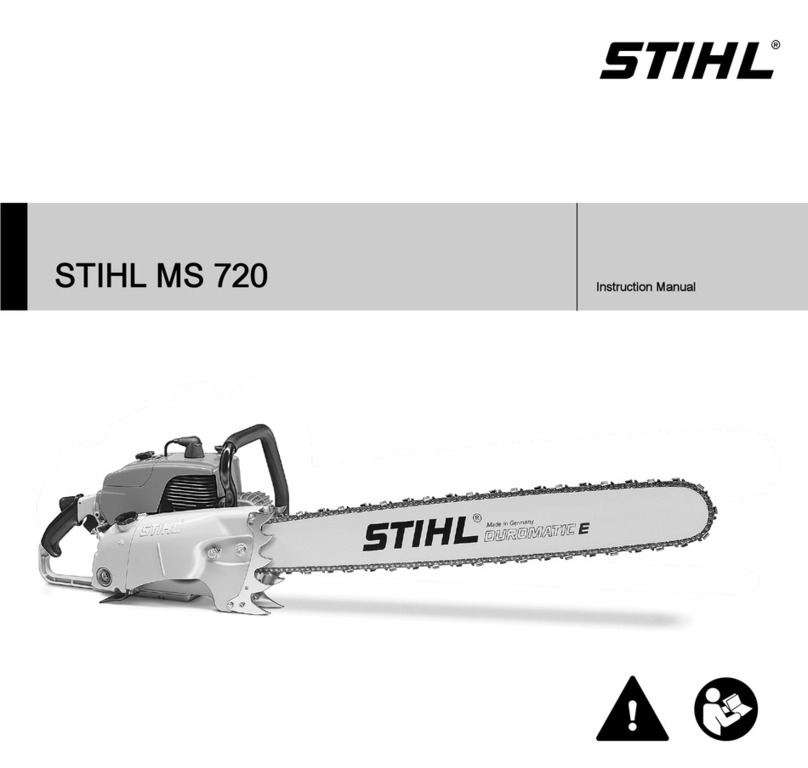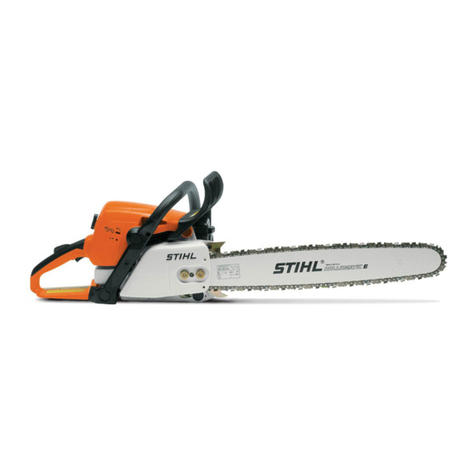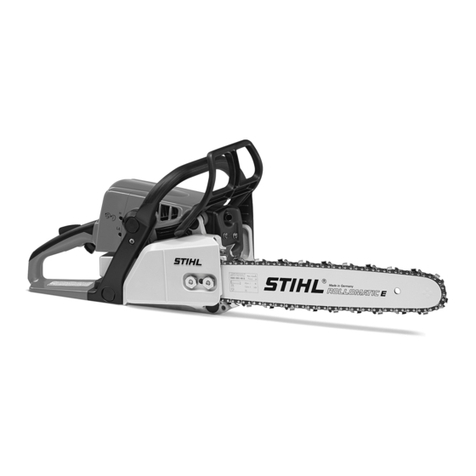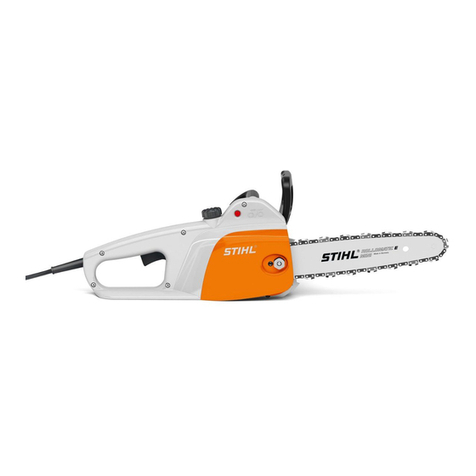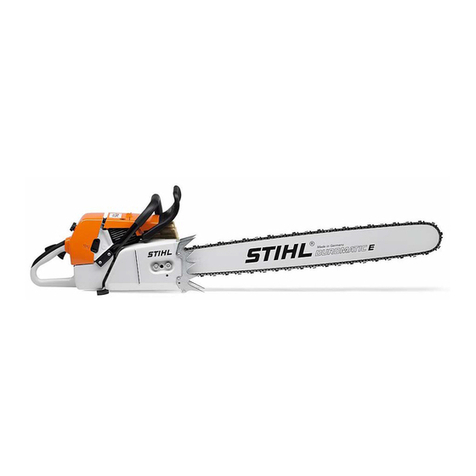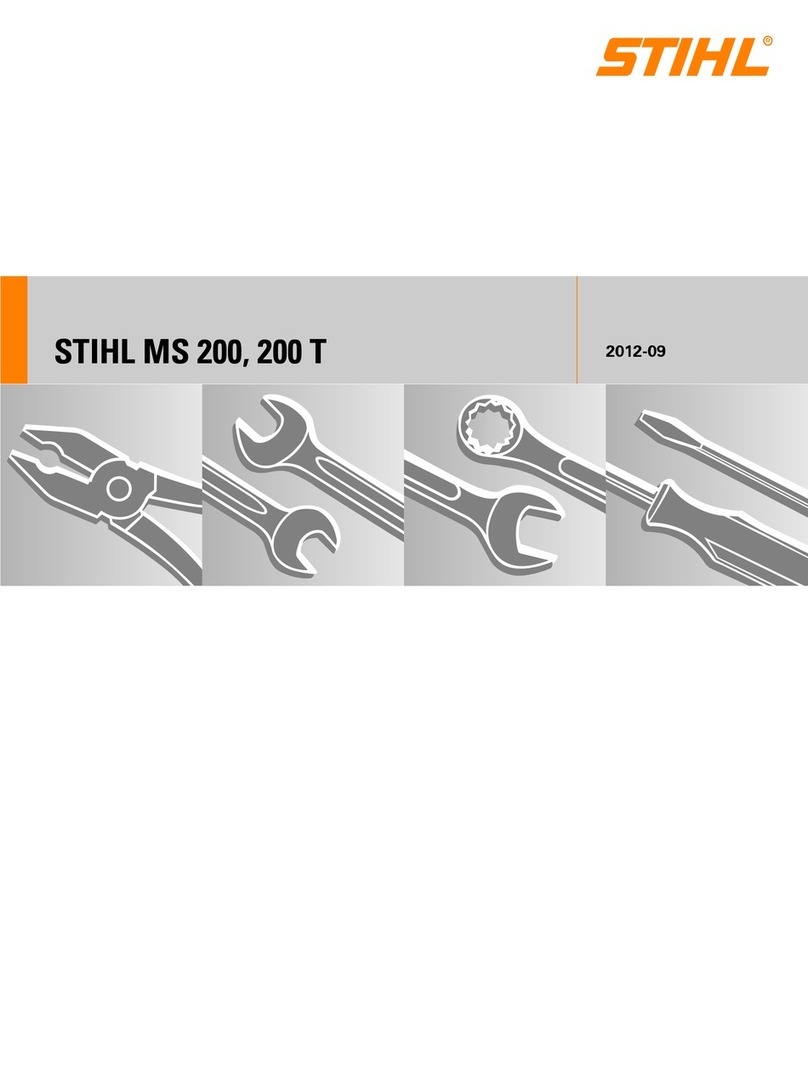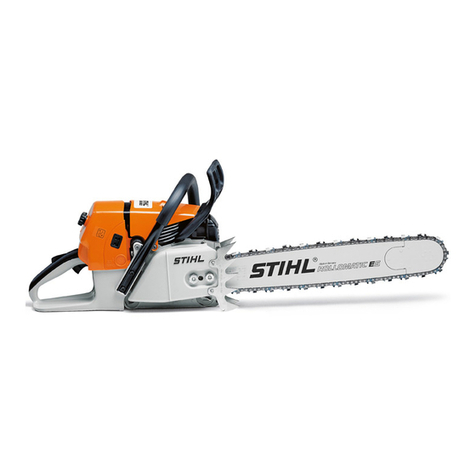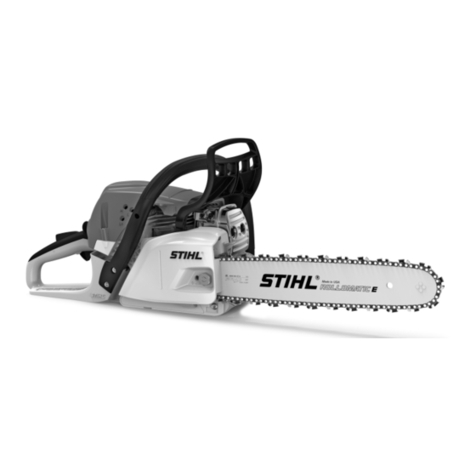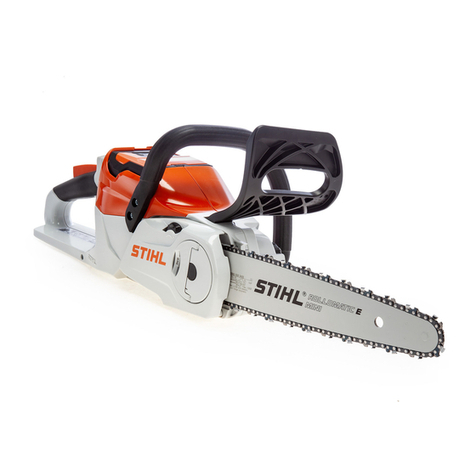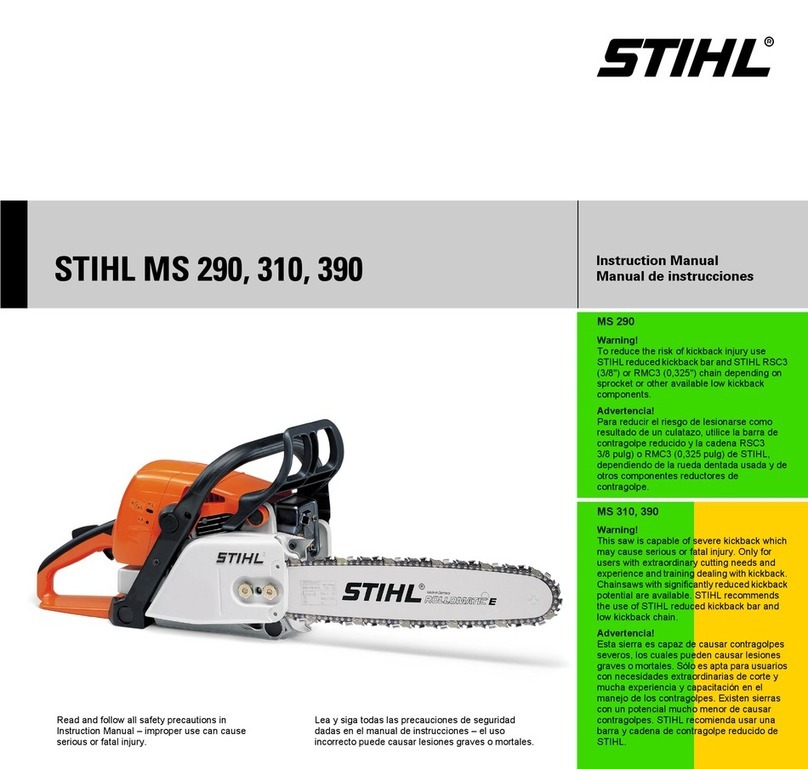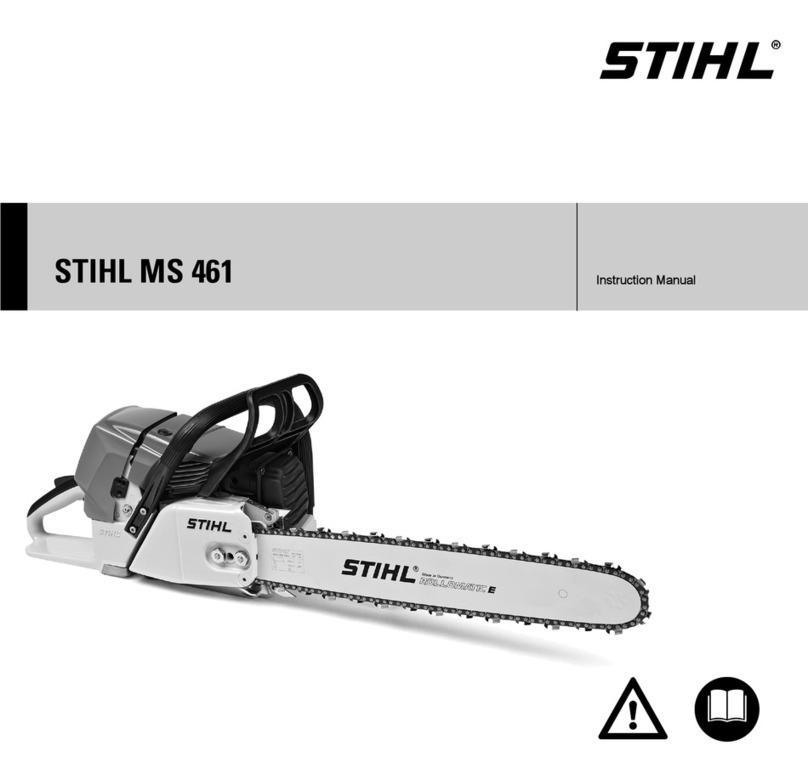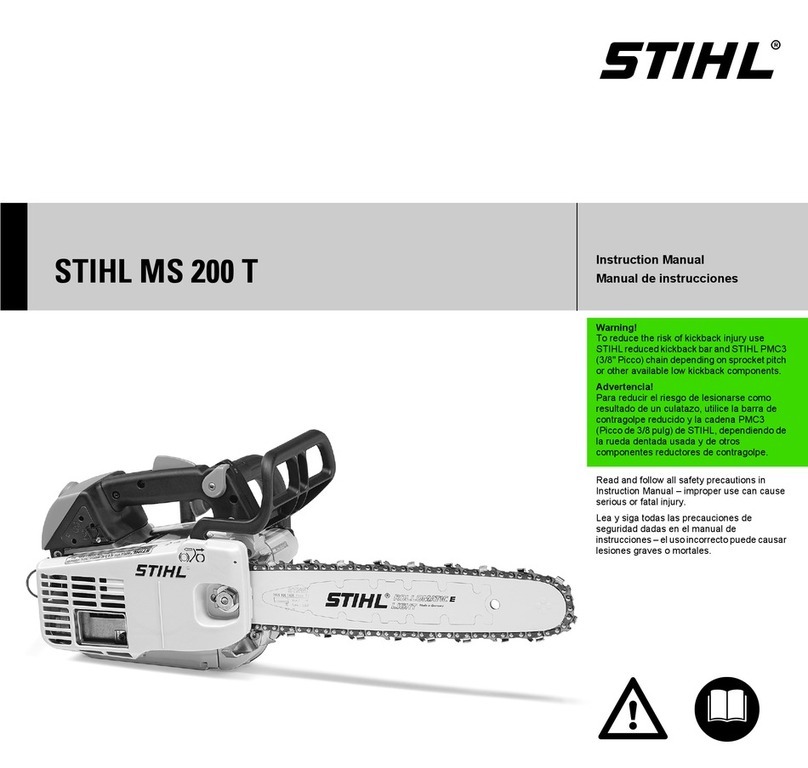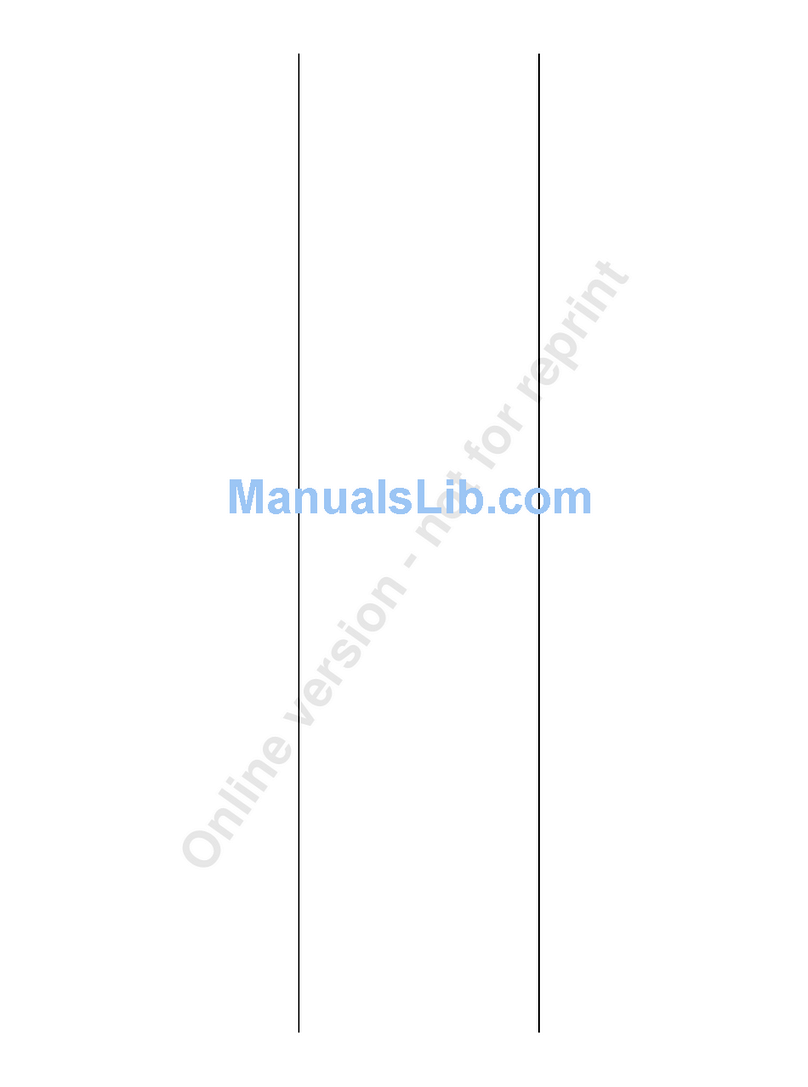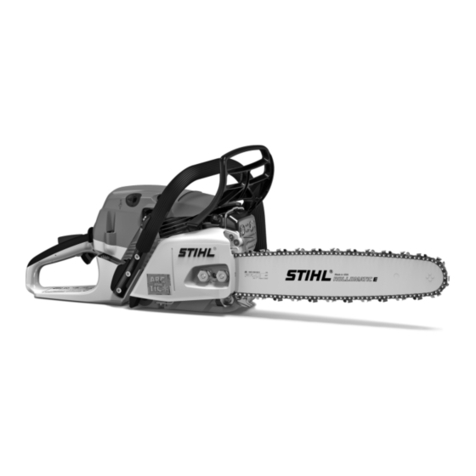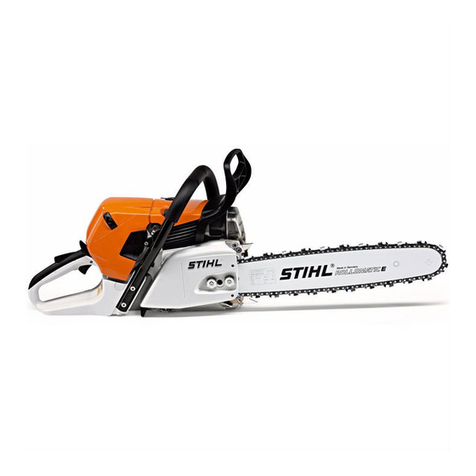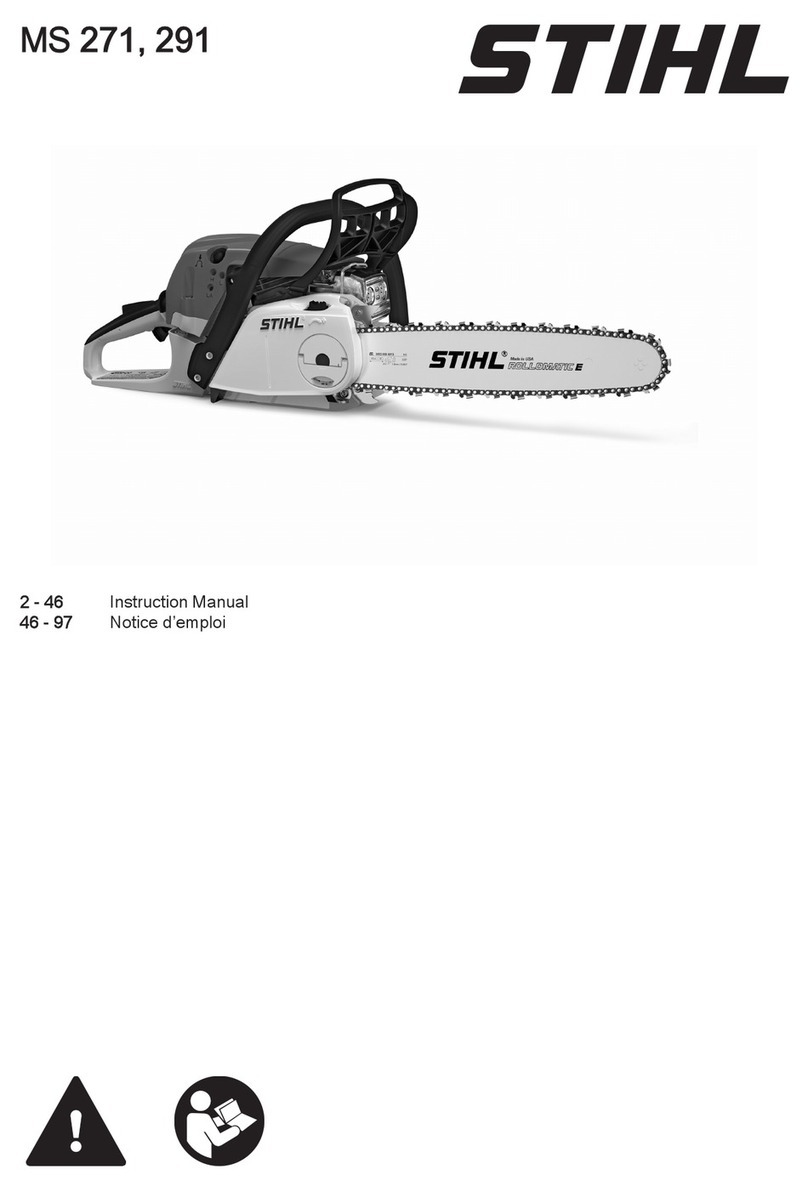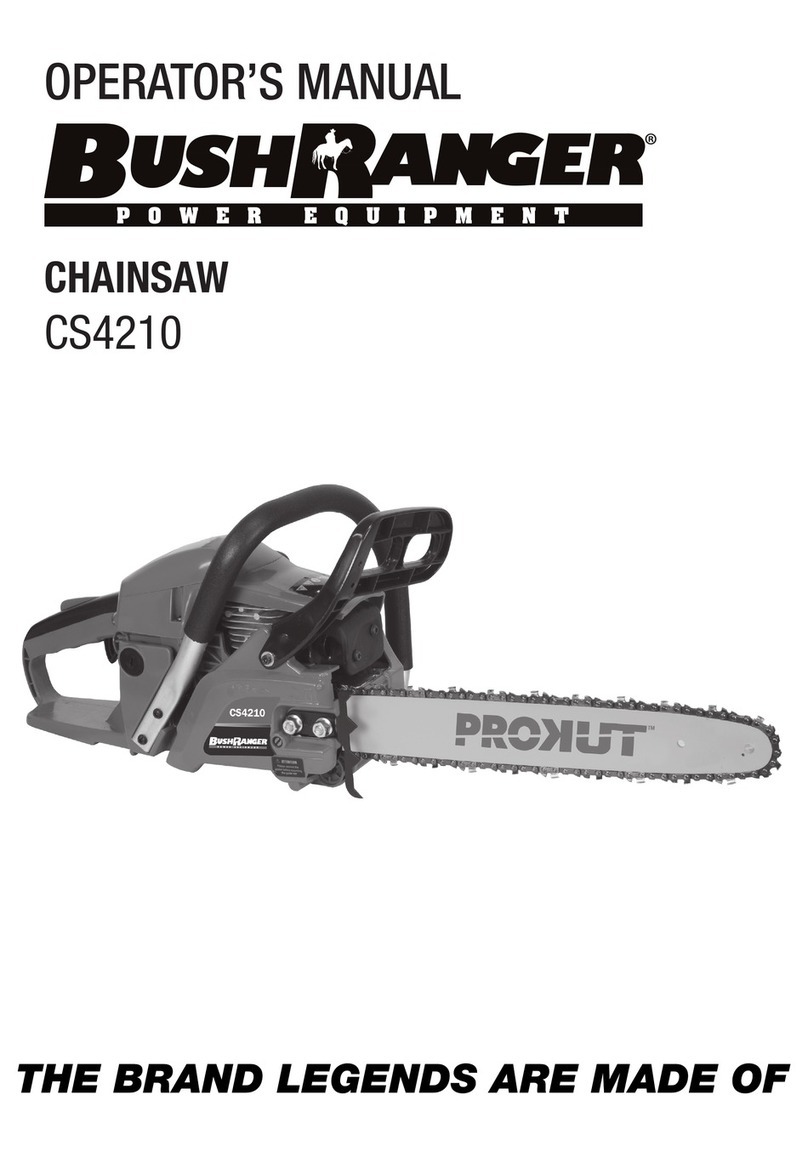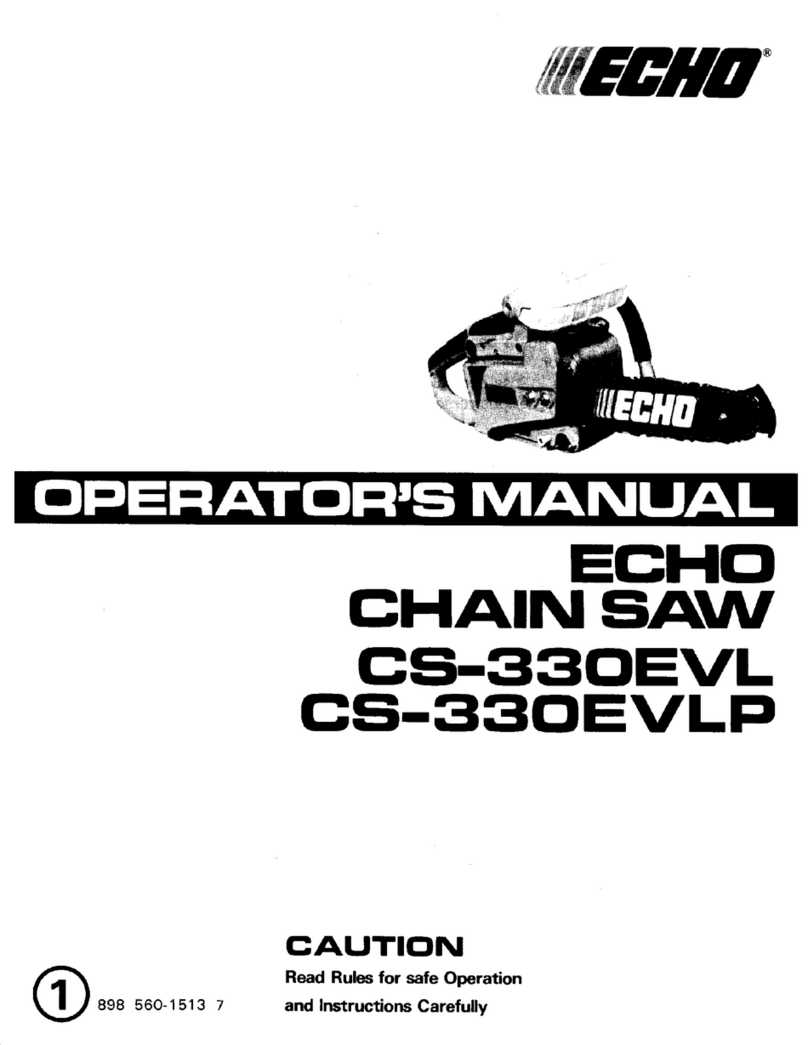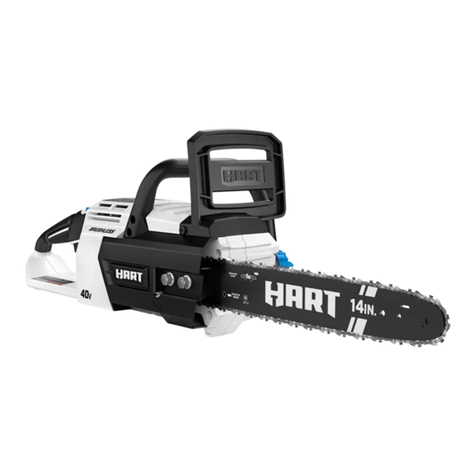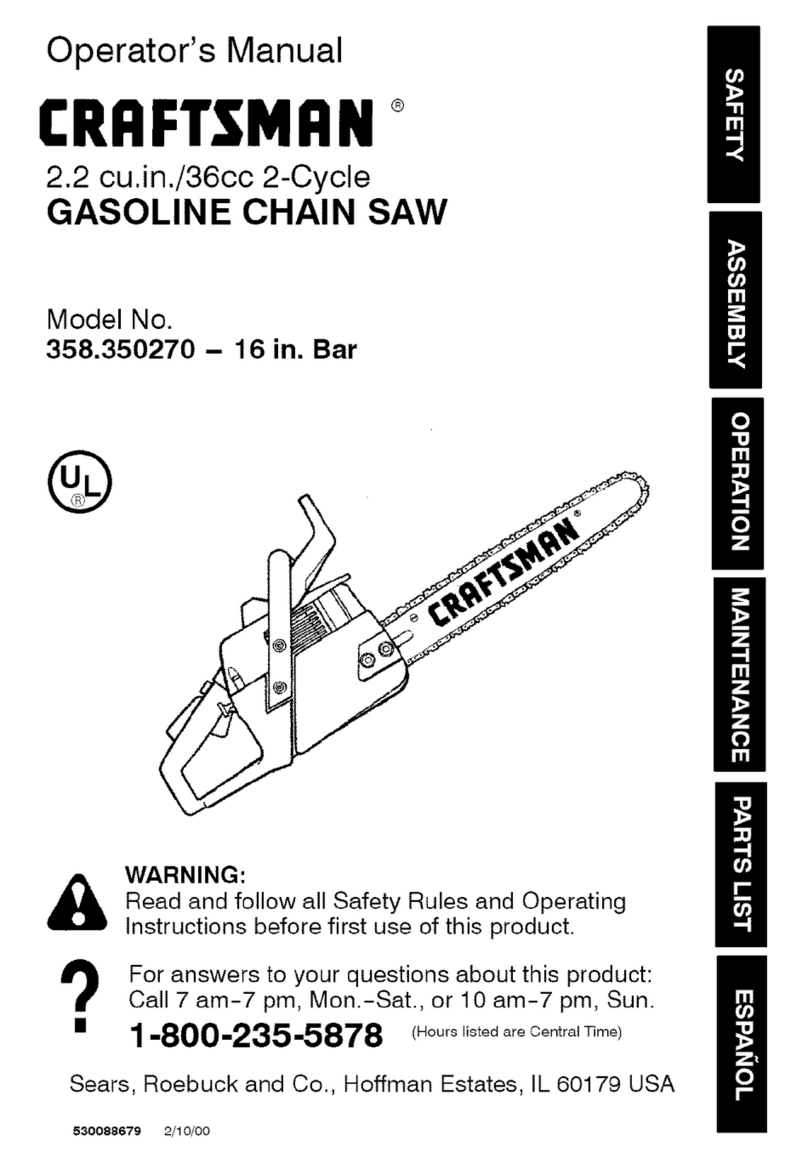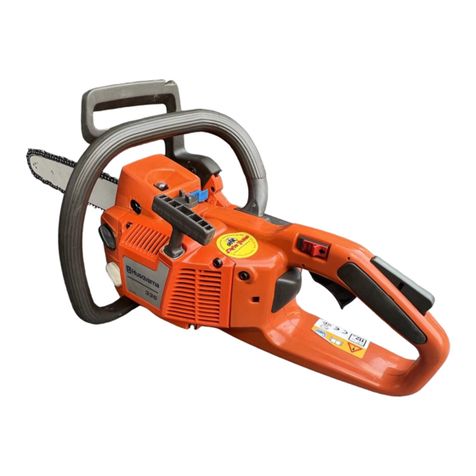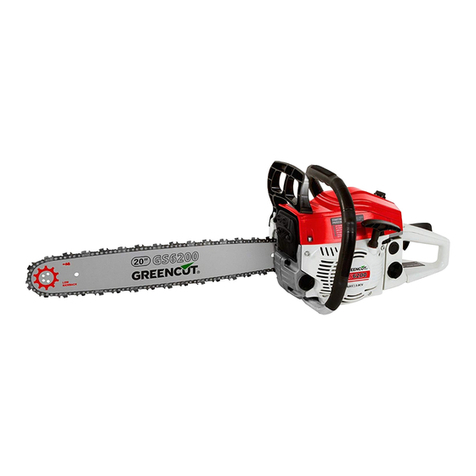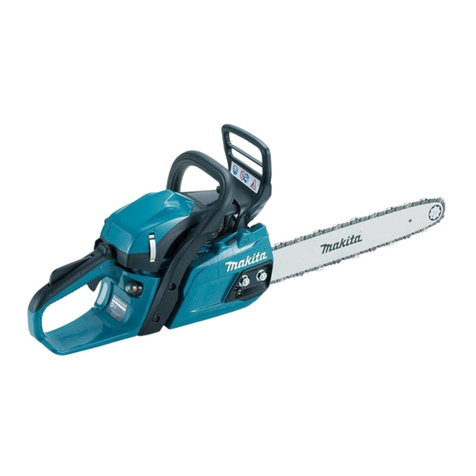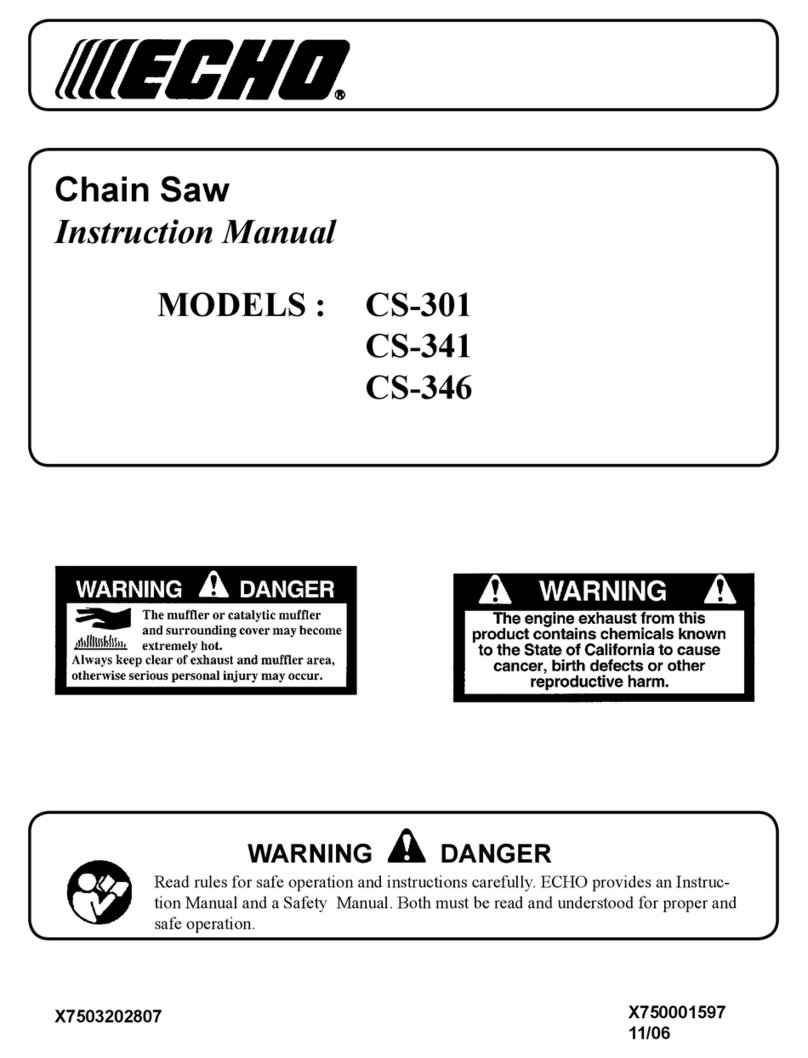
4.6.2 Guide Bar
The guide bar is in a safe condition if the follow‐
ing points are observed:
–Guide bar is not damaged.
–Guide bar is not deformed.
–The minimum groove depth is maintained,
19.3.
–Bar rails are free from burrs.
–Bar groove is not pinched or splayed.
WARNING
■ If the guide bar is not in a safe condition, it can
no longer support and guide the saw chain
properly. The rotating saw chain can jump off
the guide bar. This can result in serious or
fatal injuries.
►Work only with an undamaged guide bar.
► If the groove depth is less than the mini‐
mum depth: Mount a new guide bar.
► Deburr the guide bar every week.
► If you have any queries: Contact your
STIHL servicing dealer.
4.6.3 Saw Chain
The saw chain is in a safe condition if the follow‐
ing points are observed:
–Chain is not damaged.
–Chain is properly sharpened.
–The service marks on the cutters are still visi‐
ble.
WARNING
■If components do not comply with safety
requirements, they will no longer function
properly and safety devices may be rendered
inoperative. This can result in serious or fatal
injuries.
►Work only with an undamaged saw chain.
► Sharpen the chain properly.
► If you have any queries: Contact your
STIHL servicing dealer for assistance.
4.7 Fuel Mixture and Refueling
WARNING
■This chainsaw requires a fuel mixture of gaso‐
line and two-stroke engine oil. Fuel mixture
and gasoline are extremely flammable. If fuel
mixture or gasoline make contact with open
fire or hot objects, they can cause a fire or
explosion. This can result in serious or fatal
injuries and damage to property.
►Protect fuel mixture and gasoline from heat
and fire.
► Do not spill fuel mixture and gasoline.
► If fuel has been spilled: Wipe up the fuel
with a cloth and do not attempt to start the
engine until all parts of the saw and the
area around it are dry.
►Do not smoke.
► Never refuel near a fire.
► Shut off the engine and allow it to cool
down before refueling.
► Start the engine at least 3 meters from the
fueling spot, outdoors only.
■ Inhaling fuel fumes and gasoline fumes can
have toxic effects.
► Avoid inhaling fuel fumes or gasoline
fumes.
► Refuel in a well-ventilated location.
■ The chainsaw becomes hot during operation,
or in a very hot environment. Depending on
the type of fuel, altitude, ambient temperature
and the temperature of the saw, the fuel
expands and can cause a pressure build-up in
the tank. Fuel may escape as a spray and
ignite when the fuel tank cap is opened. This
can result in serious injuries and damage to
property.
► Allow the saw to cool down before opening
the tank cap.
► Open the tank cap slowly in stages.
■ Clothing that has been in contact with fuel or
gasoline is more easily flammable. This can
result in serious or fatal injuries and damage
to property.
►If your clothing comes into contact with fuel
or gasoline: Change your clothing.
■ Fuel mix, gasoline and two-stroke engine oil
can harm the environment.
► Do not spill fuel, gasoline or two-stroke
engine oil.
► Dispose of fuel mix, gasoline and two-
stroke engine oil in accordance with local
regulations and environmental require‐
ments.
■Fuel, gasoline or two-stroke engine oil can
cause irritation if they come into direct contact
with the skin or eyes.
►Avoid contact with fuel, gasoline and two-
stroke engine oil.
► In case of contact with the skin: Wash
affected areas with plenty of water and
soap.
►In case of contact with the eyes: Rinse eyes
with plenty of water for at least 15 minutes
and seek medical advice.
■The saw’s ignition system produces sparks.
Unconfined sparks may cause a fire or an
explosion in an easily combustible or explo‐
English 4 Safety Precautions
6 0458-788-0121-B
